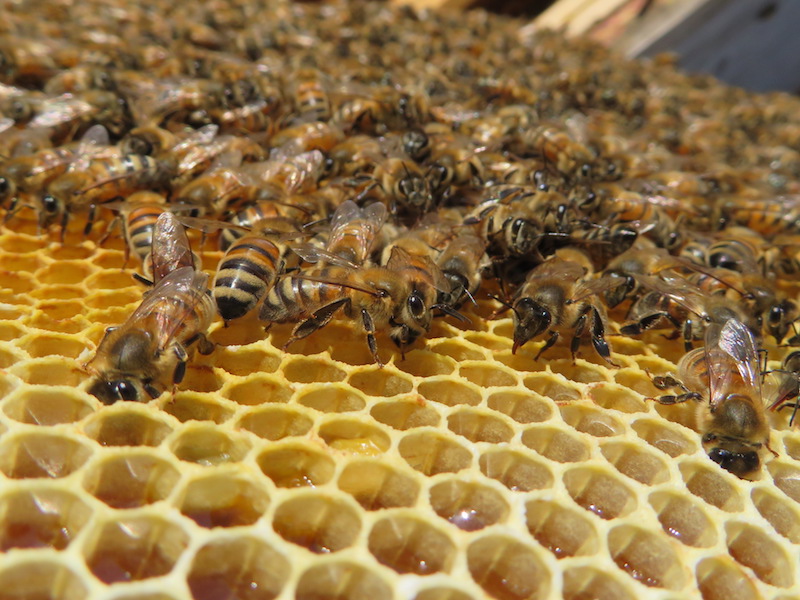What’s a 5 frame bee nuc?
A bee nuc or nucleus is generally composed of a queen in laying and five frames including three of brood and two of food, honey, and pollen.
It is not about a naked swarm which is composed to him of a packet of bees without frames and a queen in laying placed in a crate with some bees.
As far as possible, always prefer the purchase of a bee nuc to that of a bee package.
How to transport a bee nuc on frames?
Transportation will be by car.
Carry out the transport in cooler hours and leave the hive vents open. The hive should, of course, be closed, but there are doors that provide ventilation without letting the bees through.
Make sure you also secure the hive in the car so that it is stable. Make sure you take all the necessary equipment with you: protective clothing, smoker, gloves, hive tool, adhesive tape …
What to do on arrival?
The best thing to do is to place the bees directly in their final place and open the entrance to the hive. The bees will then be able to regain their calm and make their reconnaissance flight. If you do not place the hive in its final position, you risk disorienting the foragers during the transfer. If they do not find their hive, they will undoubtedly be accepted in another colony and you will have weakened your hive, which is not the desired goal.
After a few hours, you can make the transfer to the final hive, if necessary.
To do this, place the destination hive in the place of the transport hive and transfer the frames, keeping the original position of each one. As you go through, check for the presence of the queen and assess the strength of the colony. If necessary, you can enlarge the brood nest by inserting the virgin frame the last brood frame and a frame containing pollen.
Bee nuc development
A bee nuc on frames is obviously not a production colony. The first season is devoted to the development of the colony to put it in the best conditions for wintering. Do not consider making a division in the first year.
To develop the colony, you need to add frames; not too early to prevent cooling but not too late to prevent the queen from blocking the eggs. In the case of strong honeydew, I recommend a visit every five or six days. Spread out the visits in the absence of honeydew (every ten days).
In the absence of honeydew and in case of persistent bad weather, evaluate the reserves of the swarm. Sometimes it may be necessary to help with extra food. It is best to feed little and often to simulate honey flow. For example 0.2 to 0.4 lbs of 50/50 syrup given daily in case of bad weather. Do not make too much syrup as it ferments quickly. Five days of preparation is a maximum to prepare at once.

